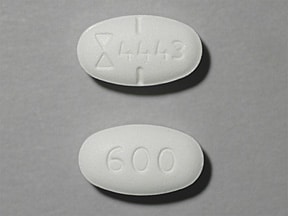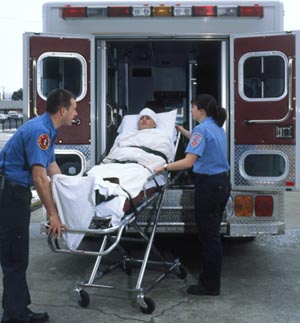Gabapentin for Alcohol dependence
Gabapentin: New Hope for Alcohol Dependence
 In the past treating alcohol and drug addicts has never been easy. Alcohol and other drugs dependence is a vice that has not only affected adversely the lives of the addicts and their dependants but also the community as well. In most cases we think that drug and alcohol dependence only affects the addicts, hell no we are wrong. The cost of these drugs and alcohol might be cheap since alcohol is readily available and can be bought at different quantities and prices. The reality is that the cost of alcohol dependence is too high to the society than it really is to the addicts themselves. Alcoholism has rendered many people jobless since their employers could not put up with their addiction. In this case the addict will not have means to get his daily quantities of alcohol to get high but the craving will be at its peak, the addict will therefore have to find other ways of getting money to buy alcohol even if it means breaking some laws. Being dependent on alcohol has made many people criminals and that is a cost that the society has to pay but unfortunately it is a cost hidden to many people.
In the past treating alcohol and drug addicts has never been easy. Alcohol and other drugs dependence is a vice that has not only affected adversely the lives of the addicts and their dependants but also the community as well. In most cases we think that drug and alcohol dependence only affects the addicts, hell no we are wrong. The cost of these drugs and alcohol might be cheap since alcohol is readily available and can be bought at different quantities and prices. The reality is that the cost of alcohol dependence is too high to the society than it really is to the addicts themselves. Alcoholism has rendered many people jobless since their employers could not put up with their addiction. In this case the addict will not have means to get his daily quantities of alcohol to get high but the craving will be at its peak, the addict will therefore have to find other ways of getting money to buy alcohol even if it means breaking some laws. Being dependent on alcohol has made many people criminals and that is a cost that the society has to pay but unfortunately it is a cost hidden to many people.
The cost of alcohol dependence does not end there. Think of the government sponsored researches that have to be done to find ways of helping the addicts to overcome their nightmare. The cost of putting up rehab centers to cater for alcohol addicts who have become pests to their families, the very people they have a responsibility to provide for. In the past many researches have been done to find out the best medicine that could be of help to those dependent on alcohol. Alcohol dependence has affected the economy of most continents but according to a recent research finding there is a ray of hope to treatment of alcohol dependence.
A recent study that was done at San Diego by Researchers at The Scripps Research Institute declared new hope in the treatment of alcoholism in November 2013, following the results of a new study to treat the disease with a drug that is already on the market. The presence of the drug in the market is already a breakthrough as no more will be spent to establish the medicinal ability of this drug to treat alcoholics and set them free from the chains of alcohol dependence. Unlike in most cases where after a research finding the search for drugs sets in , this finding has an already available drug and that is an advantage to the would be users.
According to the research finding; Gabapentin which is already being used as a prescription drug for people suffering from epilepsy as well as for patients with some pain, including migraines is equally good for fighting alcohol dependence. This new study found the drug appears to be safe and effective in the treatment of alcohol dependence. This research finding has brought some new hope in the field of alcohol addiction treatment and recovery.
More effective in treating alcohol dependence
“Gabapentin’s effect on drinking outcomes is at least as large or greater than those of existing FDA-approved treatments,” said Barbara J. Mason in a news release from the Scripps Research Institute. Mason is the co-director of the Pearson Center for Alcoholism and Addiction Research, who led the new research. If what Mason said is to be believed then people will begin using Gabapentin in place of the drugs that have been approved by FDA already.
“Plus, it’s the only medication shown to improve sleep and mood in people who are quitting or reducing their drinking, and it’s already widely used in primary care—that’s an appealing combination,” Mason said in the release.
It is a known fact that there has never been a cure for alcoholism, but the doctors have always availed drugs to treat the symptoms that are associated with alcohol withdrawal. Some of the prescription drugs that have been used in treating symptoms related to alcoholism include naltrexone, which the National Institutes of Health describes as a prescription to prevent relapse. Alcoholism can also be treated with 12-step programs and psychotherapy. For the 12-step programs and psychotherapy you will need to find a rehab that will best individualize your treatment to help you out.
According to the TRSI researchers , this drug has more benefits as it helps with cravings, depression and sleeplessness often experienced by alcoholics, other drugs that are already approved by FDA for alcoholism are not as effective as gabapentin.
In three months of treatment, TRSI researchers also said the high-dose group refrained from heavy drinking twice as often as the placebo group, and entirely abstained four times as often as the placebo group. They reported the drug also reduced the number of drinks consumed, and said none of the patients reported serious side effects.
“I think that we can now have confidence in the pharmacological effect of this drug,” Mason said in the news release.
 Alcoholism affects millions of people. In America alone, More than eight million are thought to suffer from alcoholism. The NIH estimates more than 700,000 of them seek treatment every day and with this discovery they might as well be helped.
Alcoholism affects millions of people. In America alone, More than eight million are thought to suffer from alcoholism. The NIH estimates more than 700,000 of them seek treatment every day and with this discovery they might as well be helped.
The new study was described as a “150-patient randomized, placebo-controlled, double blind clinical trial” in the news release. With many researchers still trying the best drug to treat alcohol dependence we should be ready for some new stuff but as for now gabapentin may just be the best for you.
We at AWAREmed Health and Wellness Resource Center are committed to helping all addicts overcome the vice by availing critical information and treatment. Dr. Dalal Akoury (MD) of AWAREmed Health and Wellness Resource Center in Myrtle Beach, South Carolina is experienced in integrative medicine for addiction. Visit her at Myrtle Beach, South Carolina for help.
Gabapentin: New Hope for Alcohol Dependence





 However a doctor should be able to take good care of the patient even if he is not able to offer any reasonable help to the patient. He should be able to assist the patient to access another health center where he can be helped. If a doctor fails to attend to emergency because of matters of inconvenience he will be charged and prosecuted.
However a doctor should be able to take good care of the patient even if he is not able to offer any reasonable help to the patient. He should be able to assist the patient to access another health center where he can be helped. If a doctor fails to attend to emergency because of matters of inconvenience he will be charged and prosecuted. has been a problem that the society has been fighting with. It has very many causes, however as revealed by a study that was led by Richard Ries MD of
has been a problem that the society has been fighting with. It has very many causes, however as revealed by a study that was led by Richard Ries MD of 






 Gabapentin also known to many as Neurontin is an anticonvulsant and analgesic drug. This drug was originally developed to treat epilepsy however it also works well in relieving is neuropathic pain and is now used for pain relief in most hospitals worldwide. It is recommended as a first line agent for the treatment of neuropathic pain arising from diabetic neuropathy, post-herpetic neuralgia, and central neuropathic pain. This drug may also be prescribed for other off-label uses such as treatment of restless leg syndrome, anxiety disorders, insomnia, and
Gabapentin also known to many as Neurontin is an anticonvulsant and analgesic drug. This drug was originally developed to treat epilepsy however it also works well in relieving is neuropathic pain and is now used for pain relief in most hospitals worldwide. It is recommended as a first line agent for the treatment of neuropathic pain arising from diabetic neuropathy, post-herpetic neuralgia, and central neuropathic pain. This drug may also be prescribed for other off-label uses such as treatment of restless leg syndrome, anxiety disorders, insomnia, and  This study used randomly selected 150 alcohol dependent individuals who were put on a 16-week course of naltrexone, 50 mg/d alone; naltrexone, 50 mg/d, plus gabapentin up to 1200 mg/d for the first 6 weeks; or to double placebo. They also received medical management. Most of these participants were in their mid-forties. They were dependent on alcohol and drank 12-13 alcoholic drinks per day before the study entry. By week 6, about 50% of the individuals randomly assigned to placebo or naltrexone alone had a
This study used randomly selected 150 alcohol dependent individuals who were put on a 16-week course of naltrexone, 50 mg/d alone; naltrexone, 50 mg/d, plus gabapentin up to 1200 mg/d for the first 6 weeks; or to double placebo. They also received medical management. Most of these participants were in their mid-forties. They were dependent on alcohol and drank 12-13 alcoholic drinks per day before the study entry. By week 6, about 50% of the individuals randomly assigned to placebo or naltrexone alone had a 












